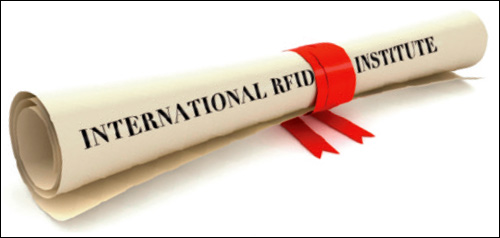According to Geoffrey Moore, author of Crossing the Chasm and other important books on the technology adoption life cycle, new technologies follow a clear and consistent path to mass adoption. First, visionaries see the great potential of a new technology and jump on board, but the vast majority of companies do not follow their lead. Instead, they wait, because the technology seems immature and risky. And the technology falls into the chasm.
Over time, companies with a compelling business problem that no other technology can solve adopt the new technology and solutions begin to mature. At some point, the technology crosses the chasm between visionaries and the “early majority.” Eventually, enough companies in one industry adopt the technology that it hits critical mass and just about everyone in that industry adopts it. From there, it spreads to other industries and eventually reaches mass adoption.

Radio frequency identification has followed exactly this path. Walmart was an early visionary, along with the U.S. Department of Defense (DoD) and a few other organizations. But the vast majority of companies did not follow their lead, and in 2007 RFID plunged into the chasm. Since then, we have seen companies across many industries deploy the technology to solve specific business problems, including lost or misplaced assets, inventory inaccuracies and shipping issues.
Retail is one industry that has embraced RFID more than all others, because virtually all retailers share a common business problem—inaccurate inventory data and resulting out-of-stocks. But only a dozen or so retailers have deployed RFID in all their stores, and the vast majority of retailers have not begun using RFID in any serious way. So what needs to happen for RFID to reach mass adoption in retail and then spread to other industries?
Moore says five conditions must exist for a technology to reach mass adoption:
• A global standard
• A problem no other technology can solve
• The “whole” product (integrated solution)
• Critical mass of end users
• A “gorilla” the market can embrace (a dominant technology provider)
In retail, there is a global standard for RFID. Virtually all retailers RFID-tracking clothing, footwear and accessories are using passive ultrahigh-frequency technology based
on the ISO 18000-6C standard. There is a problem no other technology can solve (cost-effectively): lack of inventory visibility and accurate inventory data.
But there is no whole product yet. Retailers typically have to buy tags from one company, readers from another and software from a third. It’s unlikely one company will ever provide the entire solution. Just as the PC industry had Microsoft, Intel and IBM in the early days, it will likely be three RFID companies coming together to provide a complete solution. Some systems integrators will provide software and source readers and tags for retailers.
The whole product also must be relatively simple to deploy. For years before Apple created the iPod, a consumer who wanted mobile access to MP3 files had to buy a separate MP3 player, CD ripper and software and copy songs from CDs. Apple developed a whole solution that included the iMac with a built-in CD-ROM drive, software for copying songs to iTunes, and iTunes to create playlists and copy the songs to the iPod. But it wasn’t just that Apple created a complete solution. The iPod took off because iTunes and the iPod were easy to use.
Today’s retail RFID solutions are not simple to deploy. Companies can use handhelds to take inventory, but most retailers want overhead readers that provide real-time inventory. Intel has created an overhead reader that is designed to be easy to deploy and use, and is relatively inexpensive. It remains to be seen if that solution will lead to industrywide adoption, but Intel appears to be one of the few companies trying to simplify always-on inventory data collection.
When RFID becomes easier to deploy and use, as well as more scalable, more retailers will quickly adopt it and the technology will reach critical mass. All chains will begin using RFID and all clothing will have manufacturer-applied tags. Then, RFID will rapidly spread to sporting goods, jewelry and auto parts retailing (that’s already beginning to happen).
Will RFID Go Beyond Retail?
It’s difficult to say. Apparel is RF-friendly, so deployment can be made relatively simple.
Tagging metal parts in a factory will always involve special tags. One day, these tags might be built into parts, but it’s unlikely that will happen unless key players in an industry make it happen. Airbus and Boeing are driving parts tagging in the aerospace sector, and the DoD is doing the same in the defense sector. It’s possible these industries will achieve mass adoption and the technology will then spread to other manufacturing sectors, such as automotive and electronics.
It’s likely many industries would adopt RFID if providers made always-on overhead readers that were easy to install and configure and were relatively low-cost. I’m not sure why that’s such a big if. Where’s RFID’s Steve Jobs?

